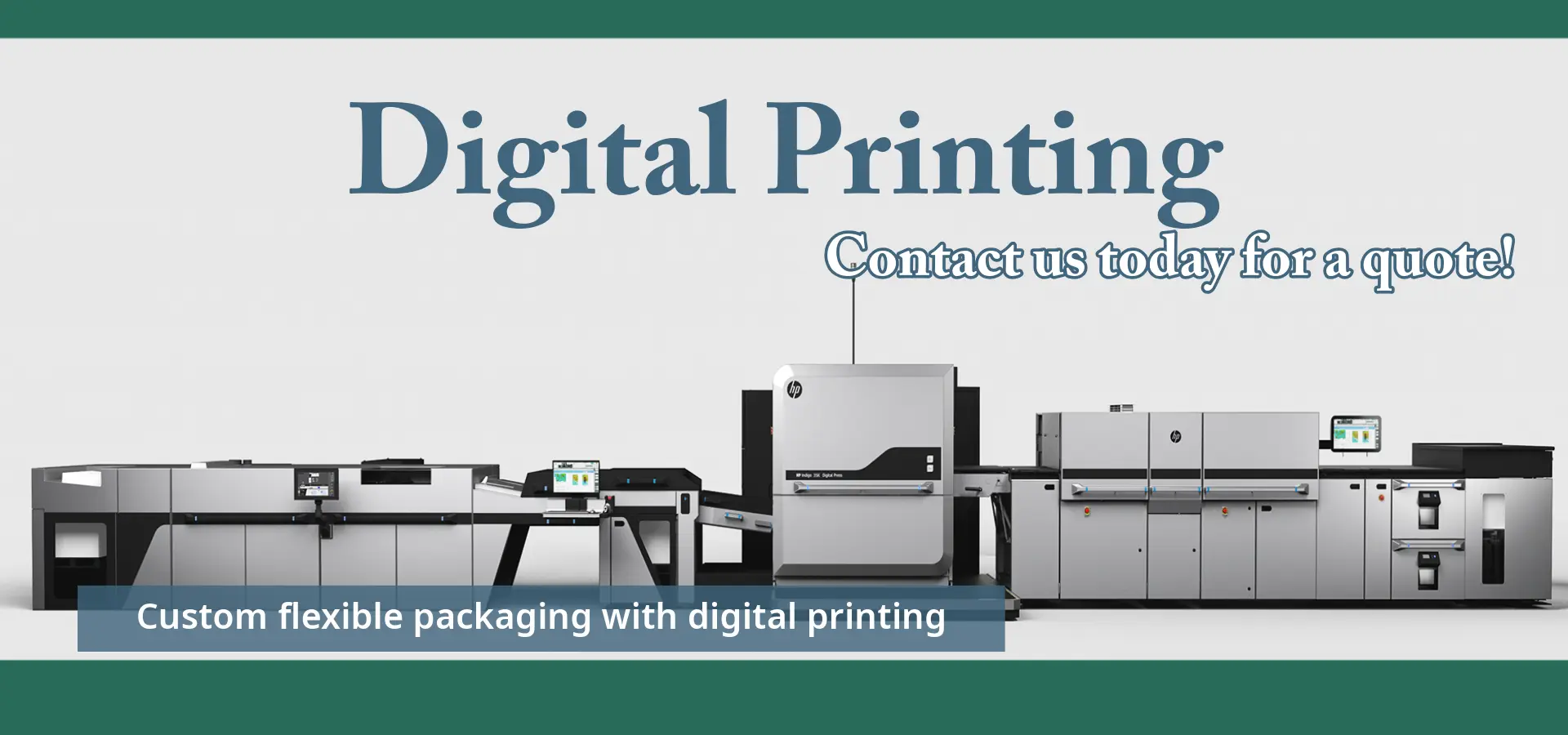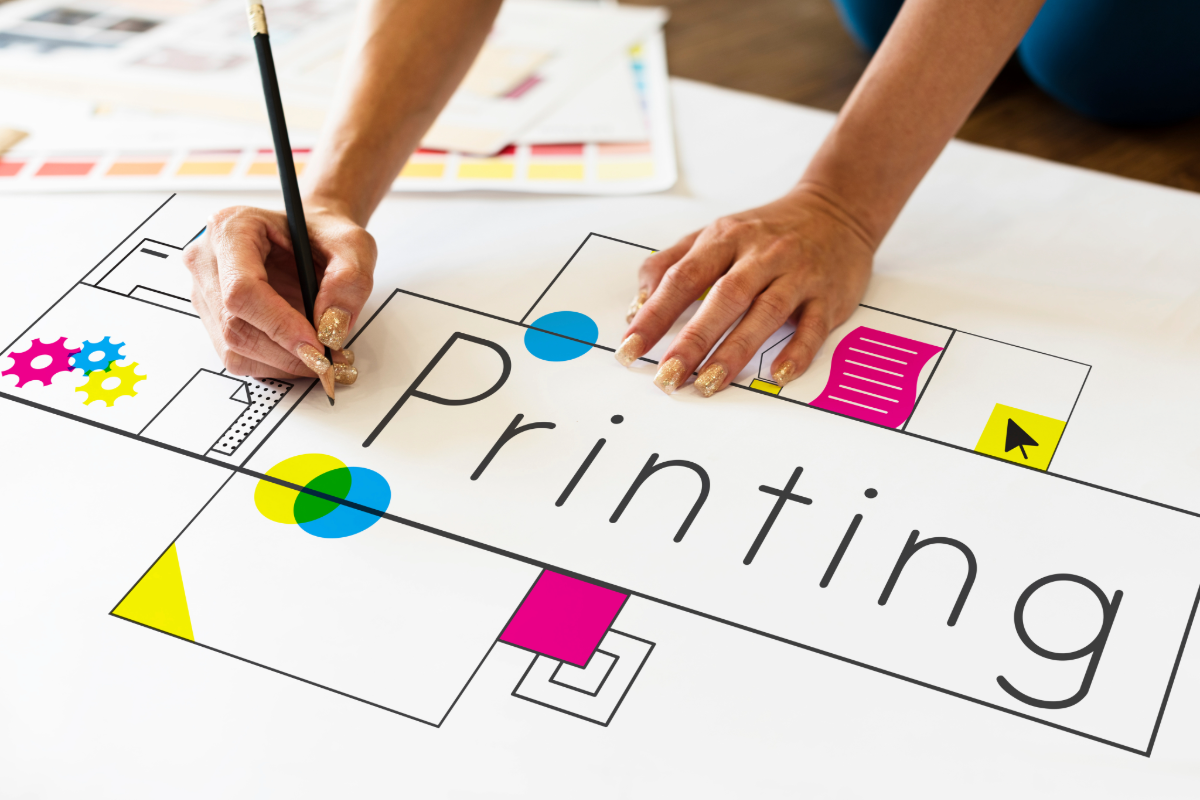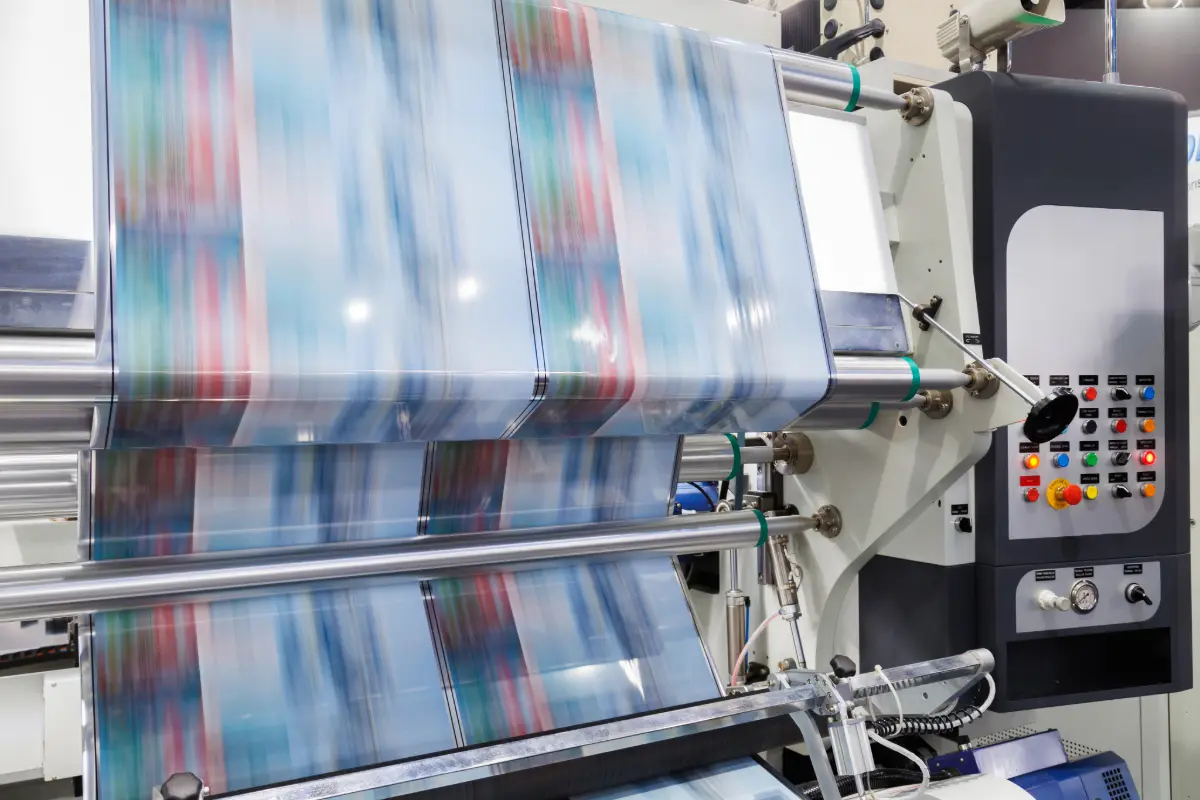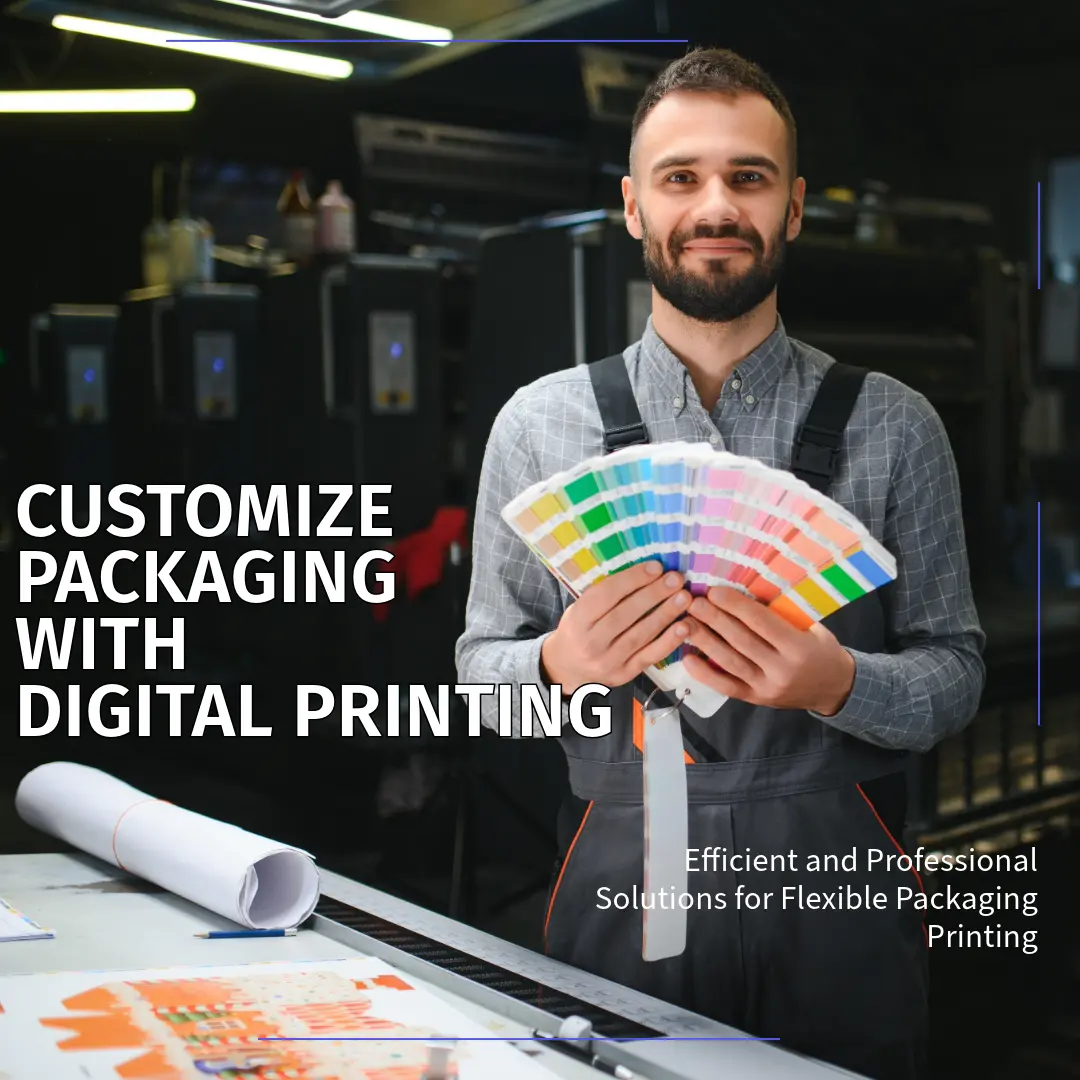디지털 프린팅
What is digital printing in flexible packaging?
Digital printing in flexible packaging uses digital tech to print designs, text, and images on materials like plastic, foil, and paper. Unlike traditional methods that need printing plates, digital printing uses electronic files to transfer images directly. This results in faster turnaround, less waste, and easy customization for different products or campaigns.

Benefits of digital printing in packaging
Digital printing offers unmatched packaging design flexibility. It allows for quick changes and customization without costly plates. This means brands can easily adapt to trends or seasonal promotions.
Digital printing produces higher-quality prints than traditional printing. To print all of the colors, only one pass is necessary. Changes may be made even at the last minute before printing thanks to digital printing technology. Because there is no need for water, photo chemicals, or pre-press processes, digital printing packaging is considered an environmentally sustainable printing procedure. There is high demand for digital printing packaging market from various industries such as cosmetics, pharmaceuticals, food & beverage, and electrical & electronics. (Source: Digital Printing Packaging Market Research, 2031)
Speed is another key benefit. Traditional methods require long setup times, but digital printing enables faster turnaround. This is crucial in industries like snacks and candy or cosmetics, where time-to-market affects sales.
Kalead Pack’s ensures consistent quality across different packaging types, from spout pouches to mylar bags. Consistency builds consumer trust and brand loyalty.
Variable data printing (VDP) is also possible with digital methods. VDP allows unique codes, personalized messages, or QR codes on each package. This is particularly useful for promotions or tracking product batches.
Reducing environmental impact also occurs. Digital printing has a lower impact on the environment since it doesn’t require plates or excessive ink. It is an eco-friendly method for companies focusing on sustainability like those in organic food or cosmetics.
Cost efficiency cannot be overlooked. Small and medium businesses benefit from lower initial costs. It is ideal for niche markets since it allows smaller orders without high costs.
Brands impact of digital printing
Digital printing can help brands adapt to market trends. For example, a coffee brand can launch a limited-edition flavor with eye-catching designs within weeks. Speed-to-market is crucial in industries like snacks and candy, where trends change rapidly.
Digital printing also enables personalization and customization for large SKUs. Brands can create unique packaging for different customer segments or special events. A cosmetics company might design exclusive packaging for holiday seasons, increasing customer engagement and loyalty.
Environmental impact is another consideration. For SKUs, digital printing produces less waste and uses fewer resources. Customers are always seeking environmentally friendly products.
Packaging Digest reports that packaging design influences 70% of consumers when they make purchase decisions. Kalead Pack helps brands stand out in competitive markets like beauty and personal care, pet food, and frozen food.
Limitations of digital printing
Cost for Large Volumes
While digital printing is cost-effective for short runs, it becomes less economical for larger volumes. Flexography and gravure are cheaper for large print jobs because ink costs less and they print faster than other methods.
Material Compatibility
Digital printing is not compatible with all flexible packaging materials. Some materials need special surfaces to last long and work properly with digital printers. Not all materials are suitable.
Durability
Digital print packaging can be durable. Flexible packaging often undergoes significant handling and stress. Digital print inks may not be as durable as traditional inks against abrasion, moisture, and other environmental factors.
Finishing Processes
Digital printing may struggle with certain finishing processes. For example, achieving high-quality metallic finishes or complex varnishes can be difficult, limiting packaging style options.
Color System
Color Consistency and Quality
Achieving consistent and high-quality color can be challenging with digital printing. Traditional methods (gravure printing) are often more effective at keeping colors accurate and vibrant. This is crucial for brands that need precise color matching on their packaging.

Digital Printing Vs Gravure Printing
When comparing digital and gravure printing for flexible packaging, key factors to consider are cost, quality, speed, and customization. Digital printing is cheaper for small orders due to lower setup costs, while gravure printing is best for large-scale production.
Gravure offers superior quality and color depth, but digital printing has improved significantly. Gravure printing is faster once set up, but digital is quicker to start for short runs.
Digital printing in customization and variable data, while gravure is less flexible. Environmentally, digital printing is more sustainable with lower waste and energy consumption.

디지털 프린팅과 그라비어 인쇄 비교
| 특징 | 디지털 프린팅 | 그라비아 인쇄 |
|---|---|---|
| 설정 시간 | 최소 설정 시간 | 긴 설정 시간 |
| 비용 효율성 | 소량 및 중량 생산에 비용 효율적 | 대량 생산에 비용 효율적 |
| 인쇄 품질 | 고품질 인쇄, 세부 디자인에 적합 | 우수한 인쇄 품질, 대량 생산에 탁월 |
| 맞춤화 | 쉽게 맞춤화 및 개인화 가능 | 실린더 제작 후 맞춤화 제한적 |
| 작업 완료 시간 | 소량 생산 시 빠른 작업 완료 | 실린더 준비로 인한 긴 작업 완료 시간 |
| 초기 투자 | 낮은 초기 투자 | 실린더 구매로 인한 높은 초기 투자 |
| 색상 일관성 | 양호하지만 배치별 차이 발생 가능 | 대량 생산 시 뛰어난 색상 일관성 |
| 폐기물 발생 | 최소 폐기물 | 설정 및 교정으로 인한 높은 폐기물 |
| 적합성 | 소량 생산 및 가변 데이터 인쇄에 최적 | 대량 생산 및 일관된 디자인에 최적 |
| 환경 영향 | 일반적으로 폐기물 감소로 인해 낮음 | 솔벤트 기반 잉크 및 폐기물 발생으로 인한 높은 환경 영향 |
자주 묻는 질문
디지털 인쇄는 빠른 작업 완료 시간, 고품질 이미지, 비용 효율적인 소량 생산을 제공합니다. 맞춤화 및 소량 배치에 이상적입니다.
디지털 인쇄는 필요한 재료만 사용해 폐기물을 줄입니다. 또한 기존 방식 대비 에너지 소비를 최소화합니다.
색상, 이미지, 텍스트를 쉽게 맞춤화할 수 있습니다. 계절별 프로모션이나 한정판에 적합합니다.
소량 및 중량 생산의 경우, 디지털 인쇄는 설정 비용이 낮아 기존 방식보다 비용 효율적입니다.

